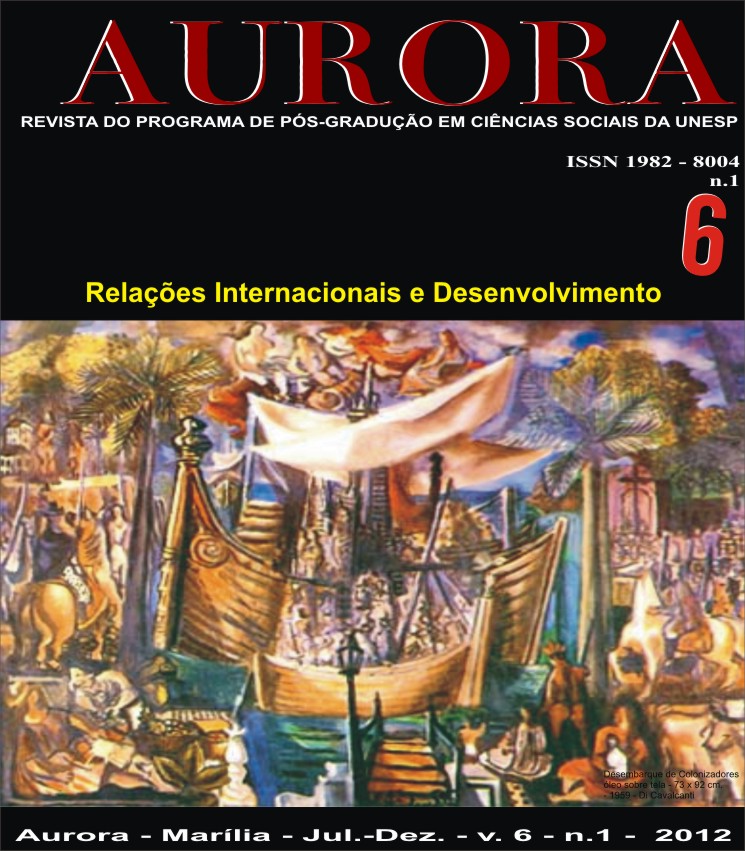The “peaceful rise” in the evolution of Chinese diplomacy in recent decades
DOI:
https://doi.org/10.36311/1982-8004.2012.v6n1.2719Keywords:
Foreign policy, Diplomacy, China, "peaceful rise"Abstract
For the Chinese government, one of the main premises of its foreign policy is that the country's development and modernization efforts will be conducted without shaking the structures of the world order, that is, it will be a process conducted in a peaceful and harmonious manner, without pretensions. hegemonic. These premises were presented as a national strategy under the name “peaceful rise”. The term was launched in 2003 by Zheng Bijian, vice-president of the Central Committee's Central Party School, during a Forum on China in the United States, and in 2004 it became part of official Chinese discourse, being used by President Hu Jintao and first Minister Wen Jiabao. This expression, however, was soon replaced by “peaceful development”, a change that may reflect disputes of interests and power between groups within the Chinese leadership and also a correction of the implications of the previous expression. This was consolidated in 2005, when the Chinese government released a document entitled China's Path to Peaceful Development, which described the objectives that the country would pursue and how it would do so. In view of this, analyzing Chinese diplomacy since its constitution as a People's Republic and the variables that involve this strategy of rise/development is of great importance for understanding Chinese foreign policy for the 21st century.
Downloads
References
CHUNG, Jae Ho. China and Northeast Asia: A Complex Equation for ‘Peaceful Rise’. Political Studies Association. Vol.27(3). 2007. p.156-164
GLASER, B. S. and Medeiros, E. S. The Changing Ecology of Foreign Policy-Making in China: The Ascension and Demise of the Theory of “Peaceful Rise”. The China Quarterly, 190, June 2007, p.291-310.
GONÇALVES, Arnaldo; China’s swing from a planned Soviet-type economy to an ingenious socialist market economy: An account of 50 years. 2005. Disponível em: http://www.caei.com.ar/es/programas/asia/19.pdf Acesso 28/08/2010 17:09
KISSINGER, Henry. Diplomacia. Editora Gradiva. 3ª Edição. Lisboa, 2007.
MEARSHIMER, John. China’s Unpeaceful Rise. Current History. Research Library. 2006. p.160-163
MOHAN, C. R. China’s “Peaceful Rise”: The Ryme of the Ancient Mariner. Economic and Political Weekly. Vol 39. No.33. 2004. p. 36999-2702. Disponível em: http://www.jstor.org/pss/4415413
NAISBITT, John and Doris. China’s Megatrends – The 8 pillar of a new Society. 1ª Edição. HarperCollins Publisher. Nova York, 2010
NAUGHTON, Barry; China: Economic Transformation Before and After 1989. Draft prepared for the conference ―1989: Twenty Years After. University of California, Irvine. November 6-7, 2009
NONNENBERG, M. B.; LEVY, P. M.; NEGRI, F. D.; COSTA, K. P. da. O crescimento econômico e a competitividade chinesa. Texto para discussão n° 1333 – IPEA. Rio de Janeiro, Abril/2008.
PECEQUILO, C. S. A política externa dos Estados Unidos. Editora da UFRGS. 2ª edição. Porto Alegre, 2005.
PIRES, M. O Consenso de Washington e o Consenso de Pequim: a Inserção de Brasil e China no Processo de Globalização. 2007
QINGMIN, Zhang. China’s Diplomacy. The Sinopedia Series. Cengage Learning. 2011.
SUETTINGGER, R.L. The Rise and Descent of “Peaceful Rise”. China Leadershio
Monitor. Número 12. 2005. Disponível em: http://weblog.leidenuniv.nl/media/blogs/76061/kijkennaardepers/archives/zheng%20bijian.pdf
THORTON, J.L. China’s Peaceful Rise: Speeches of Zheng Bijian 1997-2004. Disponível em: http://www.brookings.edu/fp/events/20050616bijianlunch.pdf
WANG, Jisi. “Peaceful Rise”: a discourse in China. Pekin University. 2006. Disponível em: http://www2.lse.ac.uk/newsAndMedia/news/archives/2006/Wang_Jisi.aspx
YAN, X. The rise of China in Chinese eyes. Journal of Contemporary China. Vol. 10. 2001.
p.33-39. Disponível em: http://blog.hiddenharmonies.org/wp-content/uploads/2010/02/yxt.pdf
Downloads
Published
Issue
Section
License
Copyright (c) 2012 Gabriela Granço do Amaral

This work is licensed under a Creative Commons Attribution 4.0 International License.
Open Access Journal Policy
Authors retain copyright over the published article, and Revista Aurora holds the right of first publication. The Journal adopts the Creative Commons Attribution (CC BY) 4.0 International license, which is used internationally by leading open access journals and publishers. This license allows others to remix, adapt, and build upon the published work, while giving appropriate credit to the original authors and the initial publication in this journal. Authors are permitted to enter into separate additional contracts for the non-exclusive distribution of the version of the work published in this journal (e.g., to publish in an institutional repository, on a personal website, to publish a translation, or as a book chapter), with acknowledgment of the authorship and initial publication in this journal.










